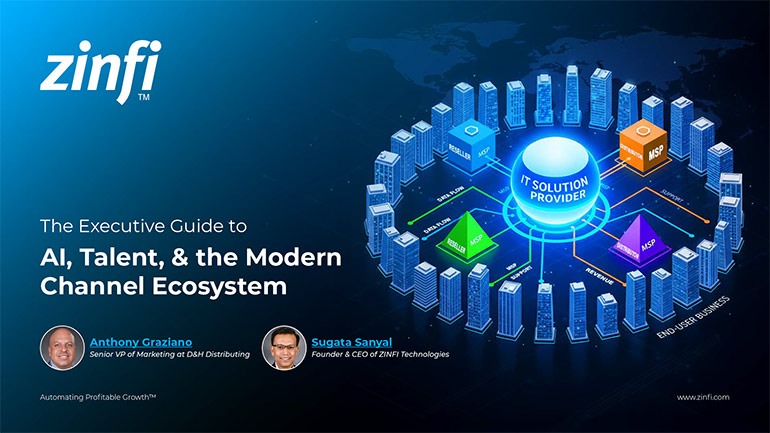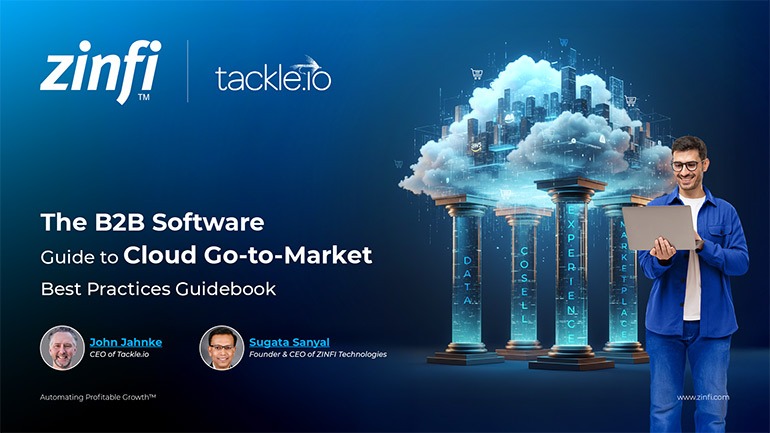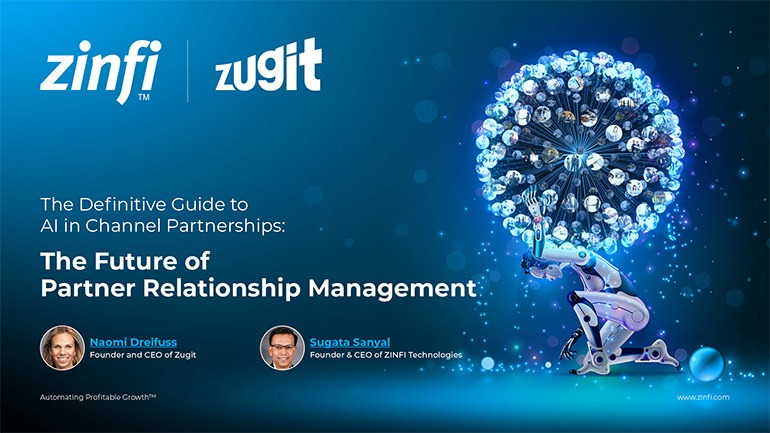Best Practices Articles

The Manufacturer’s Guide to Digital Channel Transformation
Digital Channel Transformation is crucial for manufacturers to overcome fragmented partner operations that hinder digital goals. A unified Digital Channel Management platform consolidates systems, providing real-time visibility into performance, ensuring brand consistency, and automating onboarding to build a high-performing, data-driven revenue engine.
Key Takeaways
- Challenge: Disconnected systems lead to inaccurate forecasting and a poor partner experience.
- Solution: Digital Channel Transformation via a unified platform breaks down data silos.
- Benefit: Enables real-time visibility, consistent branding, and faster partner time-to-revenue.
The manufacturing world is undergoing a significant shift. Concepts like the Industrial Internet of Things (IIoT), smart factories, and automation are making Manufacturing 4.0 a reality. This wave of digital transformation is changing everything from the factory floor to the supply chain.
However, one crucial part of the business often lags: the indirect sales channel. While companies invest heavily in production modernization, their partner networks—the distributors, dealers, and resellers who generate revenue—are often managed using outdated, manual methods. This gap hinders growth and prevents manufacturers from fully achieving their digital objectives. The necessary move is a strategic one toward holistic Digital Channel Transformation.
This article examines the tension between modern manufacturing aspirations and outdated channel practices. We will break down the main issues caused by this mismatch and show how a unified approach to Digital Channel Management can close the gap. This can turn a disconnected partner network into a streamlined, data-driven, and highly effective extension of your business. By making this change, manufacturers can gain a significant competitive edge.
The Hidden Costs of a Disconnected Partner Network
For a global manufacturer, the channel is more than just a sales arm; it represents the brand in countless local markets. When the systems supporting this network are scattered, the financial and operational costs are substantial.
The primary issue is the absence of a single source of truth. When partner data, sales leads, marketing assets, and performance metrics are spread across different, non-communicating systems, it creates chaos. This fragmentation contradicts the goals of Manufacturing 4.0, which prioritizes connectivity, data transparency, and automation. A smart factory can precisely predict maintenance needs, but the business may lack real-time insight into a partner's sales pipeline.
This disparity causes several serious business challenges:
- Inaccurate Forecasting: Without a unified view of the partner pipeline, sales forecasts become mere guesswork rather than data-driven predictions. This hurts production planning and financial strategy.
- Wasted Resources: Marketing and sales teams spend too much time manually seeking information, fixing lead data, and providing basic support that could be automated.
- Channel Conflict: Poor lead assignment and a lack of visibility into deal registration can cause partners to compete for the same business, damaging trust within the ecosystem.
- Poor Partner Experience: Partners become frustrated when navigating multiple portals, searching for resources, and dealing with slow, manual processes for tasks such as onboarding or claiming Market Development Funds (MDF).
Ultimately, a disconnected channel network acts as a drag on the agility and data focus that digital transformation is meant to deliver. The solution is straightforward: infrastructure consolidation within the channel is as critical as modernizing the factory floor. This forms a key part of the larger Digital Channel Transformation.
Overcoming Key Pain Points with Digital Channel Transformation
-
Lack of Visibility into Partner Performance
A significant challenge for manufacturing channel leaders is the "black box" of partner activity. You know your top sellers by revenue, but understanding why they succeed, or how to help mid-tier partners grow, is often impossible. This lack of visibility comes from relying on manual reporting and separate CRM systems.
The Problem of Data Silos: A manufacturer's internal CRM is typically separate from the one used by its partners. Channel managers must rely on partners to manually submit weekly or monthly sales reports via spreadsheets. This method has problems:
-
- Lagging Data: The information is old the moment it arrives, making real-time decisions impossible.
- Inaccurate Information: Partners are often busy and may provide incomplete or overly optimistic data, which can skew forecasts.
- No Early-Stage Insight: Only deals near closing are visible, hiding the top-of-funnel activities that create those deals. This prevents understanding pipeline health and where partners need support.
This data vacuum directly harms the efficiency of your entire revenue operations. Without a clear, unified view of the customer journey from initial marketing to final sale, optimizing processes or measuring ROI is impossible.
The Unified View Solution: Modern Digital Channel Management platforms are designed to break down these data silos. By providing partners with a comprehensive portal that integrates lead management and deal registration, manufacturers gain real-time visibility. A unified platform centralizes all partner sales activities, providing a single view of the entire pipeline. This allows for:
-
- Real-Time Dashboards: Track key performance indicators (KPIs) such as partner-sourced revenue and lead conversion rates in real-time, without waiting for reports.
- Data-Driven Management: Identify which partners are engaging leads effectively and which require additional training, enabling proactive support.
- Accurate Forecasting: Base production and sales forecasts on live, reliable pipeline data flowing directly from the partner network.
-
Inconsistent Branding and Messaging
Your brand is a top asset. Yet, in a distributed partner network, maintaining brand consistency can be challenging. Every partner is a potential source of brand dilution. When partners create their own materials, the messaging can become outdated, and the customer experience can become fragmented.
The Challenge of Empowering Partners: Manufacturers seek to support their partners in marketing and selling effectively. But simply providing a static library of PDFs isn't enough. Partners, especially smaller ones, often lack dedicated marketing resources and struggle with:
-
- Asset Customization: They need to co-brand materials with their own logos and contact info, but may lack design skills.
- Campaign Execution: They lack the tools to launch sophisticated digital campaigns across email and social media.
- Content Relevance: Finding the right content for a specific buyer at a particular stage is hard with an extensive, disorganized asset library.
The result is that corporate marketing efforts fall short. The powerful brand story gets lost before it reaches the end customer.
The Centralized Marketing Solution: A key part of effective Digital Channel Management is a Through-Partner Marketing Automation (TPMA) platform. This central hub houses all brand-approved marketing assets and pre-built campaigns. Partners can then:
-
- Easily Co-Brand: Dynamically add their own branding to materials like email templates with a few clicks, automatically enforcing brand rules.
- Launch Turnkey Campaigns: Execute multi-tactic digital campaigns developed by corporate marketing, generating leads with minimal effort.
- Access Dynamic Content: Use smart content libraries that show the most relevant assets based on product or sales stage.
This approach turns partners from potential brand problems into powerful marketing Digital Channel Transformation amplifiers, ensuring every customer interaction is consistent.
-
Inefficient Partner Onboarding and Training
The speed at which you can get a new partner productive is a critical competitive advantage. A slow, manual, and inconsistent onboarding process can result in weeks or months of lost revenue potential. Old methods relying on email, one-off webinars, and manual tracking are not scalable for a global manufacturing enterprise.
The Cost of Slow Time-to-Revenue: When partner enablement is ignored, the results are severe:
-
- Partner Disengagement: A confusing onboarding experience can make new partners lose interest and prioritize other vendors.
- Inconsistent Knowledge: Without structured training, partners may misunderstand your products, value proposition, or sales processes.
- Lack of Compliance: Manually tracking legal agreements, ethics training, or technical certifications across an extensive network is nearly impossible.
This inefficiency hampers growth and adaptability. In the fast-paced world of Manufacturing 4.0, you need partners who are ready to sell new solutions quickly, not stuck in administrative delays.
The Automated Learning Solution: Modernizing your channel strategy requires automating the entire partner lifecycle. A unified Digital Channel Management platform does this by integrating onboarding workflows with a robust Learning Management System (LMS). This allows manufacturers to:
-
- Automate Workflows: Create a digital journey for new partners, automatically guiding them through contract signing, profile completion, and initial training.
- Deliver On-Demand Training: Provide a 24/7 accessible portal for all training content, from product specs to certification courses.
- Track and Certify Progress: Monitor learning progress and automatically issue certifications, ensuring the network is qualified and compliant.
By automating this, you can drastically reduce a new partner's time-to-first-revenue, creating a more engaged and profitable ecosystem.
The Strategic Advantage of a Unified Platform
For years, manufacturers have attempted to address these individual issues with a combination of separate solutions: a distinct portal for assets, an external tool for leads, spreadsheets for MDF tracking, and a basic CRM. This patchwork approach simply creates a different kind of chaos—a complex, expensive, and fragile tech stack that's impossible to scale.
The goal of a mature digital transformation strategy is to simplify and integrate. This is where the concept of infrastructure consolidation becomes paramount. A unified Digital Channel Management platform is inherently a consolidation exercise. It replaces the confusing web of separate systems with a single solution that manages every step of the partner journey.
This unified platform provides one environment for:
- Partner Relationship Management (PRM): The core communication hub and database for your partner ecosystem.
- Partner Marketing Automation (PMA): Empowering partners with co-brandable assets and ready-to-use marketing campaigns.
- Sales Enablement: Providing training, playbooks, and content through an integrated LMS.
- Incentive Management: Automating the entire lifecycle of MDF, co-op funds, and sales incentives (SPIFs).
- Lead and Deal Management: Ensuring smooth lead distribution, registration, and pipeline visibility.
By bringing these functions together, you reduce IT complexity, lower total cost, and create a unified data model. This single source of truth finally allows you to connect marketing spending to sales results, training activities to partner performance, and channel investment to overall revenue growth, thus powering an intelligent revenue operations engine.
Conclusion
The principles of Manufacturing 4.0—connectivity, automation, and data intelligence—must extend beyond the factory floor. They must apply to the partner channel that drives most revenue. Continuing to manage a global partner network with outdated tools and fragmented processes is no longer sustainable. It creates a vulnerability that undermines broader digital transformation efforts and puts you at a competitive disadvantage.
Aligning your channel strategy with corporate goals requires a fundamental shift from temporary fixes to a holistic approach built around unified Digital Channel Management. By eliminating data silos, automating manual work, and providing a single, seamless platform, manufacturers can fully realize the potential of their partner ecosystem. This modernization is about building a more agile, predictable, and high-performing revenue engine for the future. Digital Channel Transformation is essential for success.
Best Practices Guidebook
 Modernizing Channel Marketing: AI and Ecosystem Enablement Best Practices
Modernizing Channel Marketing: AI and Ecosystem Enablement Best PracticesDownload for FREE
 The Channel’s Shift to Partner-Led With AI Best Practices
The Channel’s Shift to Partner-Led With AI Best PracticesDownload for FREE
 Hyperscalers, ISVs, and AI: Shaping the Future of B2B Software Distribution
Hyperscalers, ISVs, and AI: Shaping the Future of B2B Software DistributionDownload for FREE
 Definitive Guide to a Partner Ecosystem-First Sales Strategy
Definitive Guide to a Partner Ecosystem-First Sales StrategyDownload for FREE
 The Partner-Led Digital and AI Transformation Best Practices
The Partner-Led Digital and AI Transformation Best PracticesDownload for FREE
 Startup Talent Recruitment: Hiring Missionaries, Not Mercenaries
Startup Talent Recruitment: Hiring Missionaries, Not MercenariesDownload for FREE
 The Future of Partner Relationship Management with AI in Partnerships
The Future of Partner Relationship Management with AI in PartnershipsDownload for FREE
 Cybersecurity for the 99%: Strategies from the Frontline
Cybersecurity for the 99%: Strategies from the FrontlineDownload for FREE
 Mastering Partner Relationships: A Strategic Approach to Business Growth
Mastering Partner Relationships: A Strategic Approach to Business GrowthDownload for FREE
 Mastering Partner Relationship Management: Keys to SaaS Channel Success
Mastering Partner Relationship Management: Keys to SaaS Channel SuccessDownload for FREE
 Navigating the AI Revolution: Guide for Partners in the Microsoft Ecosystem
Navigating the AI Revolution: Guide for Partners in the Microsoft EcosystemDownload for FREE
 Mastering the Modern Buyers Journey: Sales Leader’s Guide to AI & Engagement
Mastering the Modern Buyers Journey: Sales Leader’s Guide to AI & EngagementDownload for FREE










